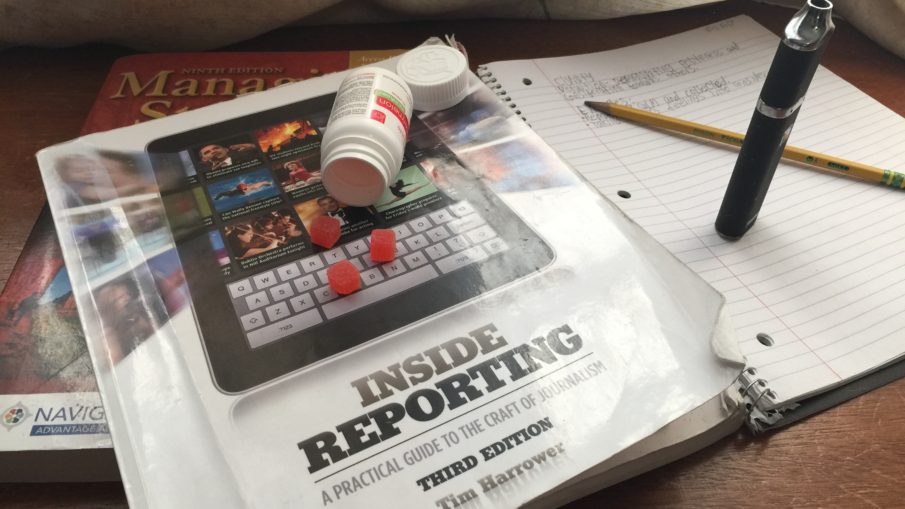It all started May 22, 2015, the day Juul was founded. In 2016 there were 2.2 million purchases of the e-cigarettes. In 2017, sales increased by 641 percent, with 16.2 million purchases.
When Juul was first introduced, the only color offered was black. These e-cigarettes resembled a black flash drive. Eventually the e-cigarette company came out with a silver Juul, and a limited edition red Juul. This reeled kids in because the company hoped more people would “need” a limited edition red Juul.
“The first Juul I bought was $55,” said FCC student Chris Yacoubian. The price of a Juul at a local gas station now is only about $20-$30, depending on where you purchase it. Why would the price decrease so much making it more affordable for children? Because there were so many purchases, the company was able to lower the price.
Many young people start using these devices because of a range of reasons. There are fruity flavors. Their friends are using them. They aren’t as harmful as cigarettes, or they are chasing a “buzz.”
At FCC, I ran into one of my friends who I know once owned a Juul. I asked him a few questions such as how did he get started, and why?
“I started because my friend literally bought me one. I hated it at first but eventually I started getting used to it. At first I didn’t know how bad they were for you, but I have stopped after hearing all of the new news reports about the Juul,” FCC student Joe Killiam said.
The New York Times reported, “School officials, struggling to control the explosion of vaping among high school and middle school students across the country, fear that the devices are creating a new generation of nicotine addicts.”
Since this increase in purchases, Juul has stopped selling fruit-flavored pods such as mango, fruit medley, creme brulee, and cucumber to try to reduce the amount of people using this device, because fruity flavors were often cited as the main reason high schoolers and middle schoolers purchased Juul and Juul pods.
Since a majority of places stopped selling fruit-flavored pods, other students weighed in on whether there will be a decrease in purchases of Juul and Juul pods.
FCC student Hannah Walasik replied, “Yes, I do think kids’ interest in Juul will decrease since a lot of kids were using Juul because they liked the fruity flavors.”
Many vape or smoke stores were somehow able to continue selling Juul fruit-flavored, along with off-brand fruit-flavored pods. The flavors include watermelon, blueberry, and strawberry.
At my local gas station, I asked an Exxon employee if Juuls were frequently bought here, and if more were by older adults or younger adults. She replied, “These Juul products are all top sellers here, I have a minimum of 10 customers purchasing products every day, mainly younger adults but sometimes older adults.”
I then asked if she noticed any decreases in people purchasing these products. Another Exxon employee said, “I have noticed a huge decrease in people purchasing Juuls along with Juul products. I believe it’s because of all the news coming out, but I don’t follow it too much so I just get most of my information from customers.”
On Sept. 6, the Washington Post posted an article called “Lung illness tied to vaping has killed five people as new case reports surge.” This article says “There are now 450 possible cases in 33 states and one territory, including the five deaths, they said.”
This statement may provide an alarming disturbance to users of Juuls or other vape products. The chemicals are used to create Juul pods are often unknown, and so are the hazards.

